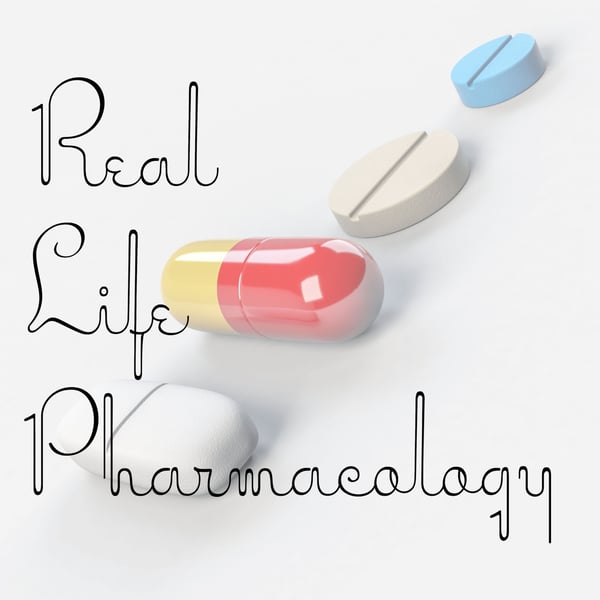Hydromorphone Pharmacology
Real Life Pharmacology - Pharmacology Education for Health Care Professionals
Eric Christianson, PharmD; Pharmacology Expert and Clinical Pharmacist
5 • 716 Ratings
🗓️ 13 January 2022
⏱️ 14 minutes
🧾️ Download transcript
Summary
I discuss the pharmacokinetics of hydromorphone and also discuss the relative potency compared to other opioids.
Hydromorphone drug interactions are mostly additive effects. Drugs that cause sedation or constipation can have additive effects on hydromorphone.
Be extremely careful with hydromorphone dosage forms. There are numerous different concentrations and strengths. I discuss this in this episode.
Transcript
Click on a timestamp to play from that location
| 0:00.0 | Hey, all, welcome back to the Real Life Pharmacology podcast. I'm your host, pharmacist Eric Christensen. |
| 0:06.3 | Thank you so much for listening today. Go check out Real Life Pharmacology.com. Go subscribe there, |
| 0:13.4 | and you will get a free 31-page PDF on the top 200 drugs. A great little study guide, great |
| 0:20.6 | little refresher, whether you're a student or out in practice |
| 0:23.3 | as a physician, pharmacist, nurse, whatever healthcare profession you're in. |
| 0:29.1 | If you deal with medications, that resource is absolutely going to be helpful for you. |
| 0:34.5 | All we ask is simply an email to get access to that list. So go check that out, |
| 0:41.1 | real-life pharmacology.com. Let's get into the drug of the day today, and that is hydromorphone. |
| 0:48.3 | Brand name of this medication is dilated. And if you've been in health care at all, you'll probably know this is an opioid |
| 0:56.7 | analgesic. So primarily what we're going to use this for is treatment of pain. And more specifically, |
| 1:05.7 | ideally, we'd like to try to limit its use to acute pain. We're definitely trying to avoid chronic opioid use |
| 1:13.4 | if we can at all do it. So really acute pain is where you're going to see this out in clinical |
| 1:20.4 | practice most often. So being an opioid analgesic, it binds opioid receptor, which ultimately inhibits those pain signals to the brain and central nervous system. |
| 1:33.6 | The way I best explain it is it essentially alters the perception of pain or how you feel about the pain. |
| 1:42.1 | So, for example, sprained or broken ankle, something like that, |
| 1:47.3 | and we use an opioid, we're not going to really heal that area or reduce inflammation or do |
| 1:53.3 | anything like that. We're just going to essentially block or blunt those pain signals or reduce |
| 2:00.4 | those pain signals going from the site to the injury |
| 2:04.0 | to the brain. So hopefully that makes sense there for you. All right, one thing I wanted to mention |
| 2:11.7 | specifically with hydromorphone, and this is true of other opioids as well, but there are a lot of different dosage forms with hydromorphone. |
| 2:21.3 | So we've got injectable, we've got oral immediate release, oral extended release, liquid oral. |
| 2:28.7 | It's a positori. |
... |
Please login to see the full transcript.
Disclaimer: The podcast and artwork embedded on this page are from Eric Christianson, PharmD; Pharmacology Expert and Clinical Pharmacist, and are the property of its owner and not affiliated with or endorsed by Tapesearch.
Generated transcripts are the property of Eric Christianson, PharmD; Pharmacology Expert and Clinical Pharmacist and are distributed freely under the Fair Use doctrine. Transcripts generated by Tapesearch are not guaranteed to be accurate.
Copyright © Tapesearch 2025.

